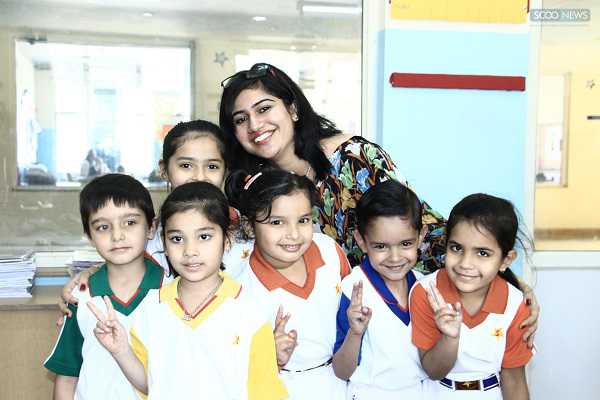Inspiration
Are inspiring teachers born or trained?
An inspiring teacher motivates students to seek further and probe deeper. Research conducted by educationists tends to view teaching as a learnable craft, if so, India can revamp its current teacher education program to make it more relevant and meaningful.
Published
9 years agoon
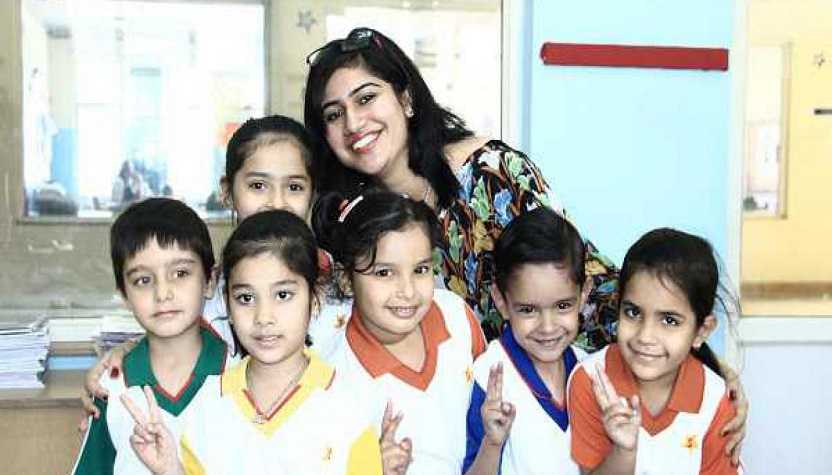
An inspiring teacher often eludes description. Teachers who spur students to seek further and probe deeper are both rare and differ on various intangible parameters. No two teachers are the same, even accounting for the basic differences in the personalities; do excellent teachers share any commonalities? Is inspiring teaching an art that cannot be taught or is excellent teaching a craft that can be nurtured in the right kind of environment?
Research conducted by educationists tends to view teaching as a learnable craft, if so, India can revamp its current teacher education program to make it more relevant and meaningful.
In his book, ‘Teach like a Champion’, educationist Doug Lemov has listed down 49 “specific, concrete and actionable” techniques that can be used by teachers to be effective in a classroom. He encourages teachers to introspect on how they handle the specifics and the nitty-gritty of teaching to become more effective.
Relevant observations
Great teaching, as Doug points out, is a lot more than having appropriate expectations from students and treating them right. It also includes the actual mechanics of teaching that can make a significant difference to lessons being delivered in a classroom.
For his research, Doug observed master teachers in action, in actual classrooms. The teachers Doug observed were true masters as they were able to beat the odds stacked against their disadvantaged kids. These teachers were able to motivate and inspire kids attending low-income schools to shine on state assessments, outperforming the state average and often excelling. So what did these teachers do differently?
In a technique he calls Double Plan, Doug says that it is imperative for teachers to plan for both what the teacher and the students will be doing for each part of the lesson. Good teachers also make their presence felt, both physically and intellectually, by walking around the room rather unpredictably, making sure that they can survey the entire class at most times, while engaging students.
Cold calling
In an interesting play of words from the Sales terminology, Doug calls the next technique ‘Cold Calling’ where to maximise participation and keep students alert, the teacher ‘cold calls’ a student to answer a question, not just those who raise their hands. Of course, the intention of this technique is to keep the class alert all the time and not to single out a child for humiliation.
Good teachers are also aware of the fact that all students needn’t know all the answers all the time. In fact, Doug leads on to another technique called the ‘No Opt Out’ technique in case a student doesn’t know the answer to a question. Let’s consider teacher A asking a question to student X in class, the student doesn’t know. The teacher then moves on to student Y for the answer who promptly gives the correct answer. At this point the teacher will turn back to student X and ask her to repeat the answer. Using this single technique, the teacher has conveyed many important pedagogical lessons.
Firstly, she does not chastise a child for not knowing an answer. Second, she destigmatises ignorance and conveys that it can be remedied.
James Stigler and James Hiebert argue in The Teaching Gap that teaching is actually a cultural phenomenon. By comparing 231 video-taped lessons of eighth-grade Mathematics in classrooms across Germany, Japan and the United States, the researchers were “amazed at how much teaching varied across culture and how little it varied within cultures.” The emphasis in German classrooms is on “developing advanced procedures,” whereas in Japan, children engage in “structured problem solving.” In contrast, in the US, children learn a lot of Math terminology and practice procedures. Interestingly, Japanese students do remarkably well in international Math assessments.
On further examining Japanese teaching practices, the authors found that Jugyou Kenkyuu or lesson study is an integral aspect of school culture. Teachers meet periodically to plan and anticipate almost every aspect of a prospective lesson including materials to be used, the kind of problems posed, potential stumbling blocks for students etc. Further, many times teachers observe each other teaching and share feedback with the group on what is most effective. All this information is often recorded as a report, which is then shared with others. Thus, teachers create a vast body of practical knowledge from which they draw.
Now, when the HRD ministry and the state education departments are consciously focussing on increasing the quality of teaching resources, there is a need for evolving more structured, practical and teacher-friendly training programmes that can help teachers refine their skills. Only if we unleash the potential of all our teachers, can expect the same to happen with the millions of children under their care.
Education
Banu Mushtaq’s International Booker Win Is a Wake-Up Call for Indian Schools to Reclaim Literature
Published
1 month agoon
May 22, 2025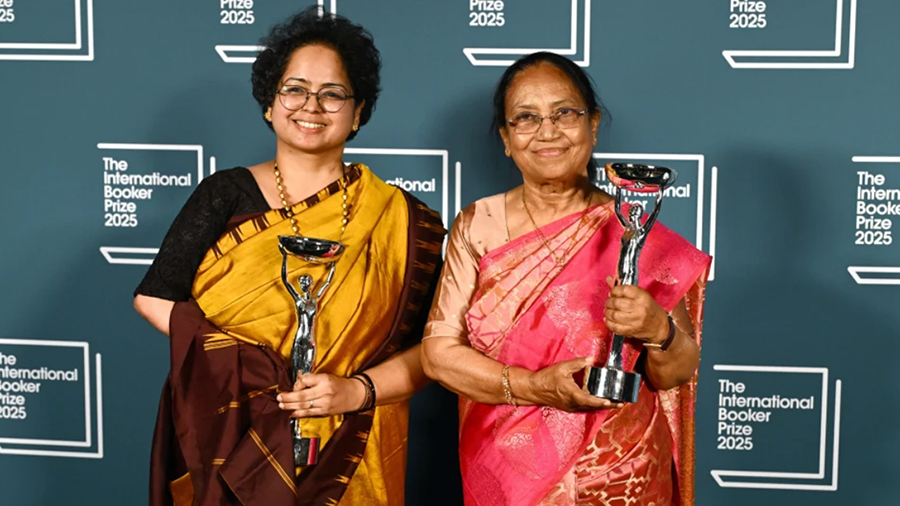
When Banu Mushtaq became the first Kannada author to win the prestigious International Booker Prize for her short story collection Heart Lamp, she didn’t just make literary history—she reignited a conversation about the role of literature in shaping society, and the way schools can nurture future writers not just as hobbyists, but as cultural forces.
Mushtaq, along with translator Deepa Bhasthi, was honoured for Heart Lamp, a collection of stories chronicling the lives of Muslim women in Karnataka across three decades. The stories are rooted in resistance, critique of religious and patriarchal structures, and everyday courage. The recognition was not just for the literary craft, but for the emotional and moral clarity the stories offer—a kind of truth that is rarely rewarded in global spaces. But the International Booker did just that.
And yet, how many students in Indian classrooms today know what the Booker Prize even is? While the Grammys, Oscars and even YouTube Play Buttons are common cultural currency among young people, literary awards often pass under the radar. This needs to change.
The International Booker Prize is one of the most prestigious literary honours in the world, recognising the finest works of fiction translated into English. It opens up space for voices that often remain local to reach a global stage. For students in India, this is an opportunity to understand that writing, especially in regional languages, is not a dead-end path. Yes, it may not offer the instant gratification of a viral video or influencer deal—but as Mushtaq’s life proves, it can shape public discourse, win global accolades, and leave behind a legacy that matters.
For educators, this is a teaching moment. Banu Mushtaq’s story is as much about literary merit as it is about resilience. She wrote in Kannada, a language she adopted over her native Urdu. She survived deep personal trauma, including a suicide attempt, and faced social backlash for her activism. She was a councillor, a journalist, and a lifelong advocate for women’s rights. These are the kinds of role models classrooms should be spotlighting—especially for young girls who need to see that stories, quite literally, can change lives.
Heart Lamp may not be appropriate for every age group, but its themes—identity, voice, justice—can be introduced in many ways. Schools should consider book discussions, literary circles, or even creative writing prompts inspired by such works to encourage students to find their voice, in whatever language or form it may come.
This win is also a reminder that educators need to broaden the definition of success they present to students. STEM, coding, and commerce continue to dominate career conversations, but it’s equally crucial to show that the arts—especially literature—have their own path to impact and influence. We hope for a time when young writers are not asked “what else do you do?” but are valued for what their words bring to the world.
Banu Mushtaq’s Booker Prize win is not just an individual triumph—it’s a collective opportunity. For schools, for students, and for all of us who believe that a powerful story can change minds, communities, and someday, the world.
Education
John King’s Book ‘Teacher By Teacher’: A Global Tribute to the Transformative Power of Education
Published
2 months agoon
May 7, 2025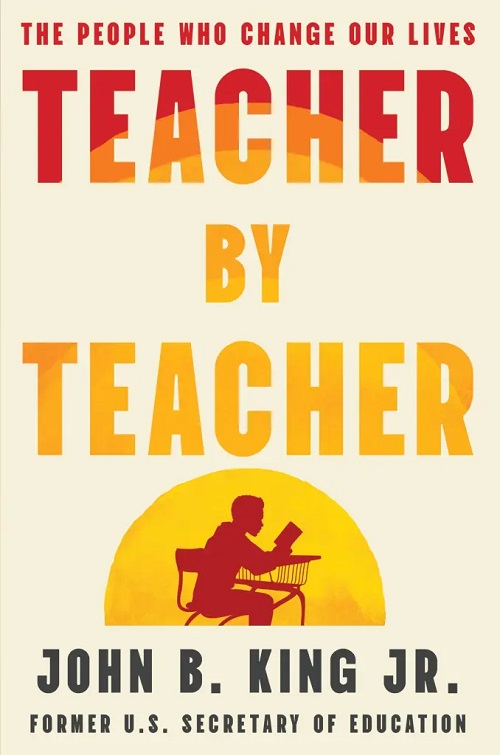
For John B. King Jr., former U.S. Secretary of Education, school wasn’t just a place—it was a lifeline. In his newly released memoir, Teacher By Teacher: The People Who Change Our Lives, King traces his journey from a grief-stricken child in New York to the corridors of educational leadership in Washington, D.C. But while the book is rooted in the American educational experience, its messages about the impact of teachers resonate far beyond U.S. borders.
In an exclusive interview with Education Week’s Sam Mallon on May 5, 2025, King reflected on his memoir, the teachers who shaped his life, and the ongoing challenges educators face worldwide.
A Childhood Saved by Teachers
King’s story is a testament to the power of mentorship. Following the death of his mother and his father’s battle with Alzheimer’s, school became King’s sanctuary. “Teachers saved my life,” he shared, recalling how educators believed in him, nurtured his potential, and gave him hope even when the world outside seemed dark.
From those formative years, King went on to earn degrees from Harvard, Columbia, and Yale. His career as a teacher, school principal, education policymaker, and eventually, U.S. Secretary of Education became a journey of giving back. The memoir celebrates not only King’s personal resilience but the quiet heroism of teachers everywhere.
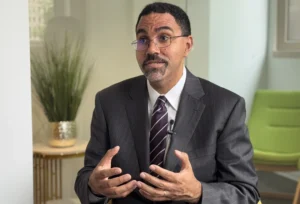
Former Secretary of U.S Education John King. Image Source- EducationWeek
While King’s book is anchored in American education, the messages it carries are universally relevant. Teachers worldwide are grappling with challenges—overcrowded classrooms, mental health issues among students, and ever-changing education policies. In his interview with Education Week, King highlighted how schools must be more than academic factories. They must be safe havens, places of healing, and hubs of inspiration.
King advocates for “trauma-informed practice”—an approach where teachers are equipped to understand and support students facing emotional challenges. This is a lesson that transcends borders, as schools globally encounter rising mental health concerns among students.
Teacher Evaluations and Policy Pressures
King’s time as U.S. Secretary of Education was marked by ambitious reforms—from implementing the Every Student Succeeds Act (ESSA) to pushing for more rigorous teacher evaluation systems. But looking back, he acknowledges a key lesson: change cannot be forced without teacher buy-in.
“Teachers can’t be bombarded with reforms,” he explained. Change must be gradual, and educators must feel a sense of ownership over new policies.
King’s narrative is ultimately about hope. In his memoir, he shares how a single teacher’s encouragement can change a student’s life trajectory. He recalls how his father’s legacy as New York’s first Black deputy schools chief was kept alive by a former student who, years later, shared how impactful his father’s teaching was.
Teaching is more than a job—it is a calling. It is a force for social good, a platform for mentorship, and a means to nurture the next generation of thinkers, leaders, and dreamers. King’s Teacher By Teacher is a reminder that educators everywhere have the power to transform lives, often without even knowing it.
Though written from an American perspective, Teacher By Teacher is a love letter to educators everywhere. It is a call to support teachers, to understand the pressures they face, and to recognise the life-changing impact they can have on their students.
For a world that often takes teachers for granted, John King’s memoir is a reminder of the heroes who stand at the front of every classroom, ready to make a difference.
Excerpts referenced in this article were taken from John King's exclusive interview with Education Week on May 5, 2025, in Washington, conducted by Sam Mallon for Education Week.
Education
Rewriting Ambedkar: Why Students Must Know the Man Beyond the Constitution
Published
3 months agoon
April 14, 2025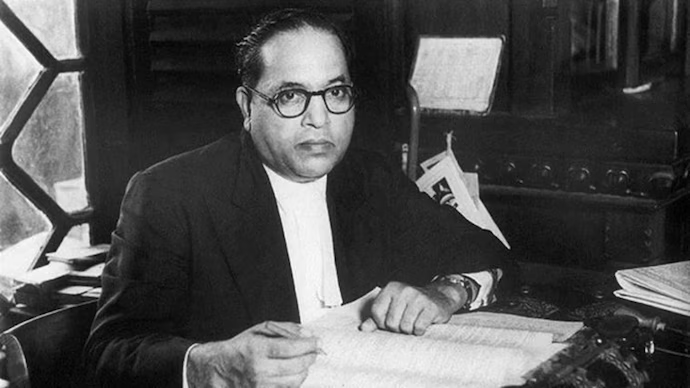
Ambedkar Jayanti Special | ScooNews
Dr. Bhimrao Ramji Ambedkar. Most students in India recognise the name—largely as the “Father of the Indian Constitution.” If you ask a Class 10 student what Ambedkar stood for, you’ll likely get a respectable summary: chairperson of the Drafting Committee, architect of constitutional equality, and perhaps a passing reference to his fight against untouchability. But that’s where it ends.
This is not a failure of our students. This is a failure of our books.
Because Babasaheb Ambedkar was not just a jurist or a political figure to be summarised in three bullet points under Civics. He was one of the most radical, intellectually fierce, and unapologetically liberal minds India has ever known. And if we are talking about modern India—its democracy, its dissent, its diversity, its demands for dignity—then Dr. Ambedkar isn’t just relevant, he is foundational.
And yet, he remains tragically under-read and under-taught.
The Man We Didn’t Read Enough About
Ambedkar’s life is a masterclass in resilience, intellect, and reform. Born into the most marginalised community in India, he went on to become the first Indian to pursue a doctorate in economics from Columbia University, studied law at the London School of Economics, and returned to a country that still wouldn’t allow him to sit beside upper-caste students.
But Ambedkar did not stop at personal success. He turned his education into ammunition. His writings dissected caste not just as a social issue but as an economic and psychological reality. In works like Annihilation of Caste, he boldly challenged not just the religious orthodoxy but also Mahatma Gandhi—a sacred figure for many—in ways that were considered almost blasphemous at the time. And even today.
Unlike Gandhi, who sought reform within the caste system, Ambedkar demanded its demolition. Where Gandhi appealed to morality, Ambedkar appealed to reason, law, and modernity.
This discomfort with Ambedkar’s sharp, unflinching views is perhaps why our textbooks package him safely—as the dignified lawyer with a pen, not the roaring revolutionary with a voice.
More Than a Constitution-Maker
To say Ambedkar gave us the Constitution is both true and painfully incomplete.
- He gave us the right to constitutional morality, the idea that the Constitution isn’t just a set of rules but a living document that must be interpreted in the spirit of liberty, equality, and justice.
- He envisioned reservations not as charity but as corrective justice.
- He believed that a true democracy must have “social democracy” at its base—not just the right to vote but the right to dignity in everyday life.
- And he warned, prophetically, that political democracy without social democracy would be India’s downfall. He was not just designing India’s governance system, but was rather trying to develop India’s moral spine.
A Voice for Individual Freedom—Louder Than We Knew
“I measure the progress of a community by the degree of progress which women have achieved.”- Bhim Rao Ambedkar
Ambedkar’s liberalism was far ahead of his time. He consistently advocated for individual rights in the truest sense. There’s documented evidence that he argued for the decriminalisation of same-sex relationships, seeing it as an issue of individual freedom long before such conversations entered our legal discourse.
His economic ideas—rarely taught—favoured state-led industrialisation, fair wages, and social security decades before these became policy buzzwords. His writings on women’s rights were equally progressive, particularly through the Hindu Code Bill, which sought to grant women equal property rights, rights to divorce, and freedom in marriage—a bill so radical for its time that it was shelved, only to return years later in diluted forms.
Why Today’s Students Need Ambedkar—Unfiltered
In an age where freedom of speech is contested, when marginalised voices still struggle for space, when gender and sexuality are still debated as ‘issues’ instead of identities—Ambedkar is the teacher we didn’t know we needed.
We need to stop sanitising him for our syllabus. We need high schoolers to read Annihilation of Caste in their literature classes and understand the intersections of caste, religion, and gender in history—not just from an upper-caste nationalist lens but from the view of the people who fought to be seen as human.
We need Ambedkar in economics classrooms, debating his views against today’s neoliberal models.
We need to introduce him as an intellectual, a radical thinker, a critic of Gandhi, a reformer of Hindu personal law, a journalist, a linguist, a labour rights advocate, a rebel with a cause.
Because the freedoms we enjoy today—freedom of religion, freedom of expression, freedom to love, to choose, to protest, to dream—all have Ambedkar’s fingerprints on them.
If our education system truly believes in nurturing critical thinkers and empathetic citizens, then Dr. Ambedkar cannot remain a footnote or a ceremonial portrait garlanded on April 14th.
He must be read. He must be debated. He must be understood. Because the more we know about Ambedkar, the more we know about ourselves—and the democracy we’re still trying to build.
Education
“Be the Change in a Changing World”: Anita Karwal and Anju Chazot Reflect on NEP 2020
Published
3 months agoon
March 27, 2025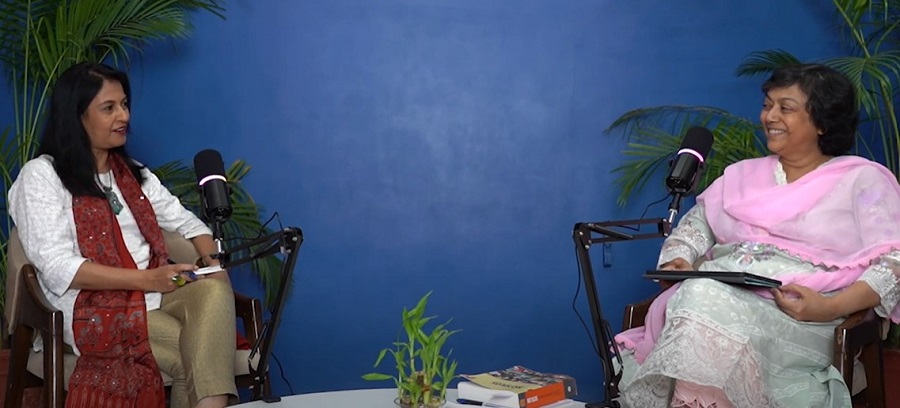
In a deeply reflective and engaging episode of the NEP Tunes podcast, Dr. Anju Chazot, education reformer and founder of Mahatma Gandhi International School (MGIS), Ahmedabad, sat down with Mrs. Anita Karwal, former Secretary of School Education, Government of India, to explore one fundamental question: How do we prepare children for a rapidly changing world?
Titled “Be the Change in the Changing World,” the episode offers a powerful conversation between two veterans of Indian education who have shared a decades-long friendship—and a mutual vision for a holistic and transformative school system.
“You can’t prepare children for tomorrow with the pedagogy of the day before yesterday.”
Drawing inspiration from John Dewey’s famous words, the episode begins by addressing the urgent need for policy literacy among stakeholders in education. Mrs. Karwal and Dr. Chazot underscore that the pace of global change—technological, environmental, economic, and emotional—has far outstripped the ability of traditional education systems to keep up. “We are in a VUCA world—volatile, uncertain, complex, ambiguous,” Karwal reminds listeners, calling for schools to adapt to this reality rather than resist it.
Decolonising the Classroom
A significant portion of the conversation focused on the historical context of schooling in India. Dr. Chazot draws parallels between today’s school system and Michel Foucault’s “cell and bell” model, which mirrors the prison system—marked by uniforms, bells, and rigid structures. Tracing the roots of modern schooling to the Prussian military model and colonial-era policies introduced by Lord Macaulay, both speakers lamented how education was once used as a tool to produce clerks for the Empire, rather than creative, entrepreneurial individuals.
“Colonialism didn’t just take away our resources; it colonised our minds,” Chazot observed. Karwal added, “The gurukul system was rooted, contextual, and sustainable. The colonial model replaced it with standardisation and control.”
Disruptions and the Call for Change
From climate change to AI, from the gig economy to rising mental health challenges—today’s youth are living in an era of non-stop disruptions. Mrs. Karwal shared a poignant insight: on the very day she retired from her government service (30 November 2022), OpenAI launched ChatGPT. “As a senior citizen, I would have felt useless had I not tried to understand this disruption,” she said, urging listeners to stay updated with technological trends.
Mental health also featured prominently in the discussion. The World Health Organization reports a 25% increase in global anxiety and depression cases, especially among the youth. Schools, Karwal said, must acknowledge and address this invisible epidemic, and create environments that are nurturing—not anxiety-inducing.
Why NEP 2020 Is a Game Changer
Against this backdrop, both educators believe the National Education Policy 2020 is a timely and visionary document. “It’s not just about academics—it’s about the whole child,” said Chazot, pointing to NEP’s focus on holistic development across cognitive, emotional, physical, and ethical domains.
Key elements of the NEP and the newly released National Curriculum Framework (NCF) discussed in the podcast include:
-
A shift from rote learning to competency-based, experiential learning
-
Focus on Indian traditions and cultural rootedness
-
Moving away from exam-centric teaching, especially in early years
-
Recognition of multilingualism and contextual learning
-
Encouragement of critical thinking, creativity, and adaptability
“Learning to learn is the most essential skill of the future,” Karwal stressed. “Children must be ready to unlearn and relearn throughout life.”
The Future of Jobs
To illustrate the rapidly changing employment landscape, both speakers listed a host of emerging careers—from Prompt Engineers and Drone Fleet Managers to Climate Data Analysts and Digital Detox Specialists. “Just imagine,” Chazot quipped, “if I were a child again, I’d become a Prompt Engineer and finally fulfil my parents’ dreams of being an engineer—with a creative twist!”
Karwal, on the other hand, expressed a desire to become a Human-Machine Team Manager—a futuristic role bridging collaboration between people and machines.
Their message was clear: the world our children are entering is drastically different from the one their parents and teachers grew up in. And education must keep up.
A Takeaway Challenge for Listeners
To wrap up the episode, the hosts offered a unique call-to-action: ask yourself what job you would pick today if you could go back in time again. Then, explore new professions with your family or students. From LinkedIn job listings to the World Economic Forum’s reports, Karwal recommended several tools to research emerging careers. They invited listeners to write in with their findings and reflections.
“This exercise is not just for students,” said Dr. Chazot. “It’s for parents, teachers, and policy-makers alike. We must all become learners again.”
Final Thoughts
In an era where the only constant is change, the NEP Tunes podcast is a timely resource to help educators, parents, and students reimagine the purpose of schooling. With leaders like Anju Chazot and Anita Karwal at the helm of the conversation, the journey towards meaningful transformation in Indian education seems not only possible—but exciting.
🟡 This article is adapted from the NEP Tunes podcast hosted by Dr. Anju Chazot. You can listen to the full episode on YouTube. Here is the video-
Education
Sunbeam Indiranagar Shines in Academics, Arts, and Sports, Cementing Its Legacy of Holistic Education
Published
4 months agoon
March 18, 2025
Varanasi: Sunbeam Indiranagar, Varanasi, has emerged as a dynamic centre for academic excellence, cultural enrichment, and sporting achievements, reinforcing its commitment to holistic education. In a year marked by significant accomplishments, students and faculty have demonstrated a dedication to intellectual growth, creative expression, and leadership development, embodying the rich legacy of the Sunbeam Group.
The school’s approach extends beyond traditional academics, encouraging students to engage in parallel activities that nurture a well-rounded skill set. From literature festivals to classical dance championships, Sunbeam Indiranagar has provided students with platforms to explore, innovate, and excel.
Students had the opportunity to engage with global thought leaders through their participation in prestigious events such as the Jaipur Literature Festival and the Great Indian Learning Festival (GILF) at Daly College, organised by ScooNews. These experiences enabled them to explore contemporary literary and intellectual discussions, sharpening their analytical and creative abilities.
The performing arts department also made a mark with theatrical performances at Banaras Hindu University (BHU) and the Krishnamurti Foundation, under the guidance of renowned dramaturgist Mukherjee P.. The school’s commitment to developing critical thinking and communication skills was further reflected in students’ achievements in quizzes, creative writing, Olympiads, debates, and visual arts competitions, underscoring a culture of academic inquiry and artistic exploration.
Sunbeam Indiranagar’s focus on all-round development was evident in the State Level Kathak Championship, where students showcased their prowess in Indian classical dance. The school’s sporting achievements were equally impressive, with students excelling in the East Zone Skating Championship 2024 and the Open District Roller Championship 2024, securing both individual and team accolades. The school’s impact extends beyond student achievements, with its leadership being recognised for their visionary contributions to education. The Principal of Sunbeam Indiranagar was honoured with the Distinguished Educator for Future-Ready Skills award, securing All India Rank (AIR) 6 in the School Leader’s category by CENTA and receiving the Nari Shakti Sammaan for contributions towards empowering students through progressive learning methodologies.
Sunbeam Indiranagar’s standing as a leading educational institution was reaffirmed when it was ranked 5th among the Best Co-Ed Day Schools in Varanasi.
With its continued emphasis on holistic development, Sunbeam Indiranagar remains dedicated to shaping young minds, reinforcing its reputation as an institution that values learning in all its forms.
Education
Nagaland Schools Launch ‘Adolescent Girls Club’ to Empower Young Girls Under Mission Shakti
Published
4 months agoon
February 27, 2025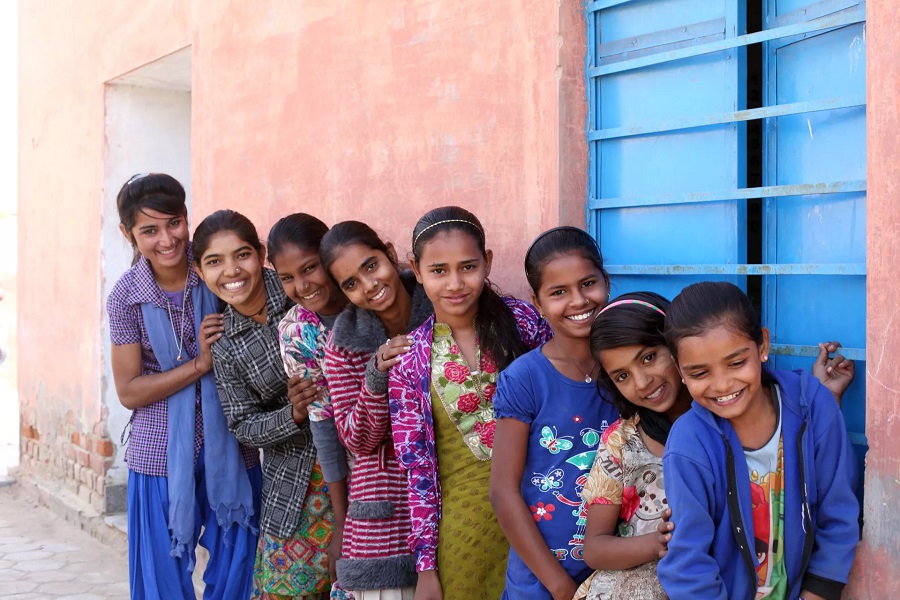
Adolescence is a pivotal phase in a child’s development, marked by rapid physical and psychological transformations. It is a time of exploration, self-discovery, and, often, vulnerability. To provide structured guidance and empower young girls during this crucial stage, Nagaland has introduced ‘Adolescent Girls Clubs’ in both government and private schools for girls aged 10-19 years under Mission Shakti.
On 5th October 2024, the first Adolescent Girls Club was launched at Don Bosco Higher Secondary School, Wokha, Nagaland, with 50 adolescent girls as its founding members. The initiative aims to equip girls with essential skills, knowledge, and support systems to navigate challenges, make informed choices, and build a strong foundation for their future. With the motto “Live the Promise,” the clubs aspire to develop confident, informed, and compassionate leaders of tomorrow.
The initiative is designed with key objectives to educate, uplift, and empower adolescent girls:
The Adolescent Girls Club will engage its members in workshops, mentorship programmes, health camps, community service projects, and creative expression activities. Additionally, a special adolescent toolkit is being developed to serve as a guide for both adolescent girls and their parents. The toolkit will include informational materials on menstrual hygiene management (MHH), mental health, teenage pregnancy prevention, child abuse awareness, and emergency helpline numbers.
Teachers and counsellors are actively working on IEC (Information, Education, and Communication) materials tailored to adolescent needs. The clubs will also conduct monthly activities to ensure continuous engagement, provide a platform for girls to discuss their concerns, and create a safe space for their growth and development.
This initiative under Mission Shakti is expected to positively impact thousands of young girls across Nagaland, equipping them with the necessary tools to navigate adolescence with confidence and resilience.Objectives of the Adolescent Girls Club
Education
Saudi Teacher Mansour bin Abdullah Al-Mansour Wins $1 Million Global Teacher Prize
Published
5 months agoon
February 13, 2025
In a heartwarming recognition of dedication and innovation in education, Saudi Arabian teacher Mansour bin Abdullah Al-Mansour has been awarded the prestigious $1 million GEMS Education Global Teacher Prize. Announced at the World Governments Summit in Dubai, the award celebrates Al-Mansour’s transformative work in empowering students from low-income families, including hundreds of gifted orphans, and his 3,000+ hours of community service.
Al-Mansour, a teacher at Prince Saud bin Jalawi School in Al-Ahsa, has spent over two decades uplifting students facing academic challenges, disabilities, and financial hardships. His efforts include establishing mentorship programmes, innovation incubators, and financial literacy initiatives, enabling students to achieve global recognition. Notably, he plans to use the prize money to build a school for talented orphans, furthering his mission to provide quality education to underprivileged children.

(Image: Mansour Al Mansour- 2025 Global Teacher Prize Winner)
Beyond the classroom, Al-Mansour has authored 21 educational books, trained over 300 educators, and led literacy programmes for prison inmates, helping reduce sentences for some. His work has earned him accolades as an international ambassador for educational excellence.
The Global Teacher Prize, now in its ninth year, recognises exceptional educators who make a profound impact on their communities. Al-Mansour was selected from over 5,000 nominations across 89 countries, joining a prestigious list of global educators.
Sunny Varkey, Founder of the Global Teacher Prize, praised Al-Mansour’s “passion, dedication, and the life-changing power of education.” Stefania Giannini, UNESCO Assistant Director-General for Education, highlighted the importance of investing in teachers to build a sustainable future.
As the world faces challenges like inequality and climate change, Al-Mansour’s story serves as a beacon of hope, reminding us of the transformative power of education and the unsung heroes shaping our future.
Education
India Marks 10 Years of Beti Bachao Beti Padhao with Nationwide Celebrations
Published
5 months agoon
January 23, 2025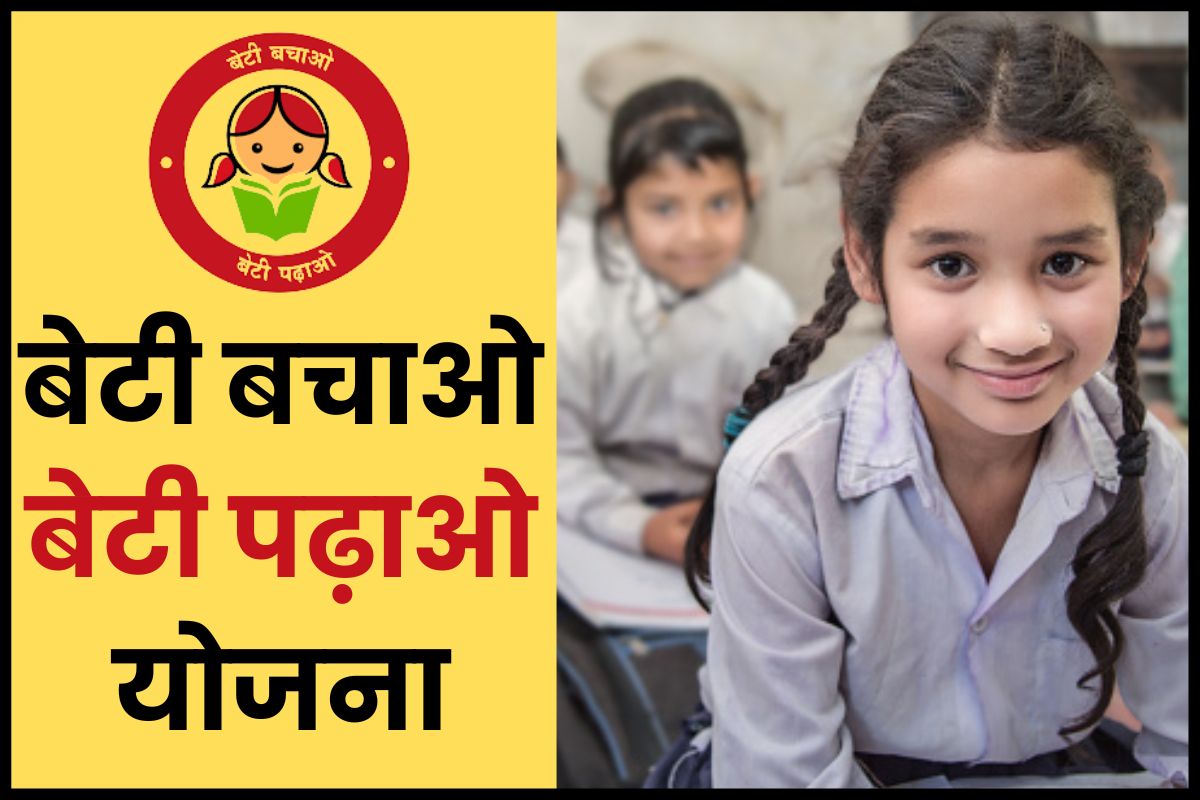
The Ministry of Women and Child Development is set to celebrate the 10th anniversary of the Beti Bachao Beti Padhao (BBBP) scheme, a landmark initiative aimed at protecting, educating, and empowering the girl child. Launched on 22 January 2015 in Panipat, Haryana, the scheme has evolved into a national movement that addresses gender discrimination and fosters societal change towards valuing and empowering girls and women.
The inaugural event on 22 January 2025 at Vigyan Bhawan, New Delhi, was attended by Union Ministers Shri J. P. Nadda and Smt. Annpurna Devi, alongside international representatives from UNICEF, UN Women, and other global organisations. Women officers from various sectors and girl students joined the event, which featured an oath-taking ceremony and the launch of compendiums and digital initiatives such as Mission Vatsalya and Mission Shakti portals.
The celebrations, spanning until International Women’s Day on 8 March 2025, will include rallies, cultural events, and campaigns at state and district levels. Schools, community groups, and women achievers will actively participate in activities under SANKALP: Hub for Empowerment of Women. Nationwide media campaigns and sustainable practices such as a plantation drive will amplify the scheme’s message.
In its decade-long journey, BBBP has sparked a nationwide dialogue on gender equality, challenging societal biases and championing the rights and dignity of women. The scheme’s accomplishments include a rise in the national Sex Ratio at Birth from 918 in 2014-15 to 930 in 2023-24, an increase in institutional deliveries to 97.3%, and higher enrolment of girls in secondary education, now at 78%. Initiatives such as the Kanya Shiksha Pravesh Utsav and Yashaswini Bike Expedition have further underscored the scheme’s impact.
Through collaboration with partner ministries, the mission of this campaign is to advancing gender equality, ensuring girls become active leaders of change and shaping a more inclusive India.
Education
National Startup Day: A New Era for Education and Entrepreneurship
Published
6 months agoon
January 16, 2025
As India celebrates nine years of the Startup India initiative on National Startup Day, 16 January 2025, it’s evident how deeply the entrepreneurial spirit has been embedded in the nation’s fabric. From being a country of aspiring doctors and engineers to a hub for budding entrepreneurs, India has undergone a significant transformation. This shift isn’t confined to adults but is increasingly taking root in schools, where the next generation of business leaders is being nurtured.
The Entrepreneurial Wave in Schools
Startup culture has permeated classrooms, with students now creating and marketing products under professional guidance. Chemistry labs aren’t just for experiments anymore; they’ve become mini manufacturing units. Students are crafting innovative products—think handmade soaps, eco-friendly cleaning agents, and even tech gadgets—and selling them under their school’s brand. This hands-on experience in entrepreneurship is teaching them valuable lessons in problem-solving, teamwork, and financial literacy, far beyond traditional academics.
Shows like Shark Tank India have also played a crucial role in shaping young minds. These programmes, widely watched across TV and OTT platforms, have demystified entrepreneurship for students and parents alike. By showcasing real-life success stories, they’ve encouraged families to view entrepreneurship as a viable career path, on par with medicine or engineering.
Schools as Incubators of Ideas
Schools today are recognising their potential to act as incubators for future business leaders. Many are introducing entrepreneurship programmes, collaborating with startups, and organising business pitch competitions. These initiatives allow students to explore their interests and learn the intricacies of building a business—from ideation and prototyping to marketing and scaling.
Some schools have even created dedicated innovation labs and partnered with local businesses for mentorship opportunities. These setups not only foster creativity but also give students exposure to the practical aspects of running a business. Such efforts align perfectly with the government’s Startup India initiative, which has championed innovation and inclusivity for nearly a decade.
Why This Matters for the Future
Entrepreneurship isn’t just about creating businesses; it’s about fostering a mindset. Students who grow up in this environment are better equipped to tackle real-world challenges, think creatively, and adapt to changing circumstances. These skills are invaluable, whether they eventually choose to run their own business or work within an organisation.
Moreover, promoting entrepreneurship in schools has a ripple effect. It not only prepares students for the future but also inspires communities and contributes to economic growth. Schools that actively engage in such initiatives are setting a precedent for holistic education that balances academics with life skills.
What Next?
With over 1.59 lakh startups now recognised in India, the country has become a global hub of innovation. Schools must seize this moment to integrate entrepreneurial education into their curriculums actively. By doing so, they will not only align with national objectives but also prepare students for a world that values innovation and adaptability above all.
As we celebrate National Startup Day, let’s look forward to a future where classrooms double as boardrooms and students graduate not just with degrees but with dreams ready to take flight.
Education
National Youth Day: Would Swami Vivekananda Be Proud of Indian Youth Today?
Published
6 months agoon
January 13, 2025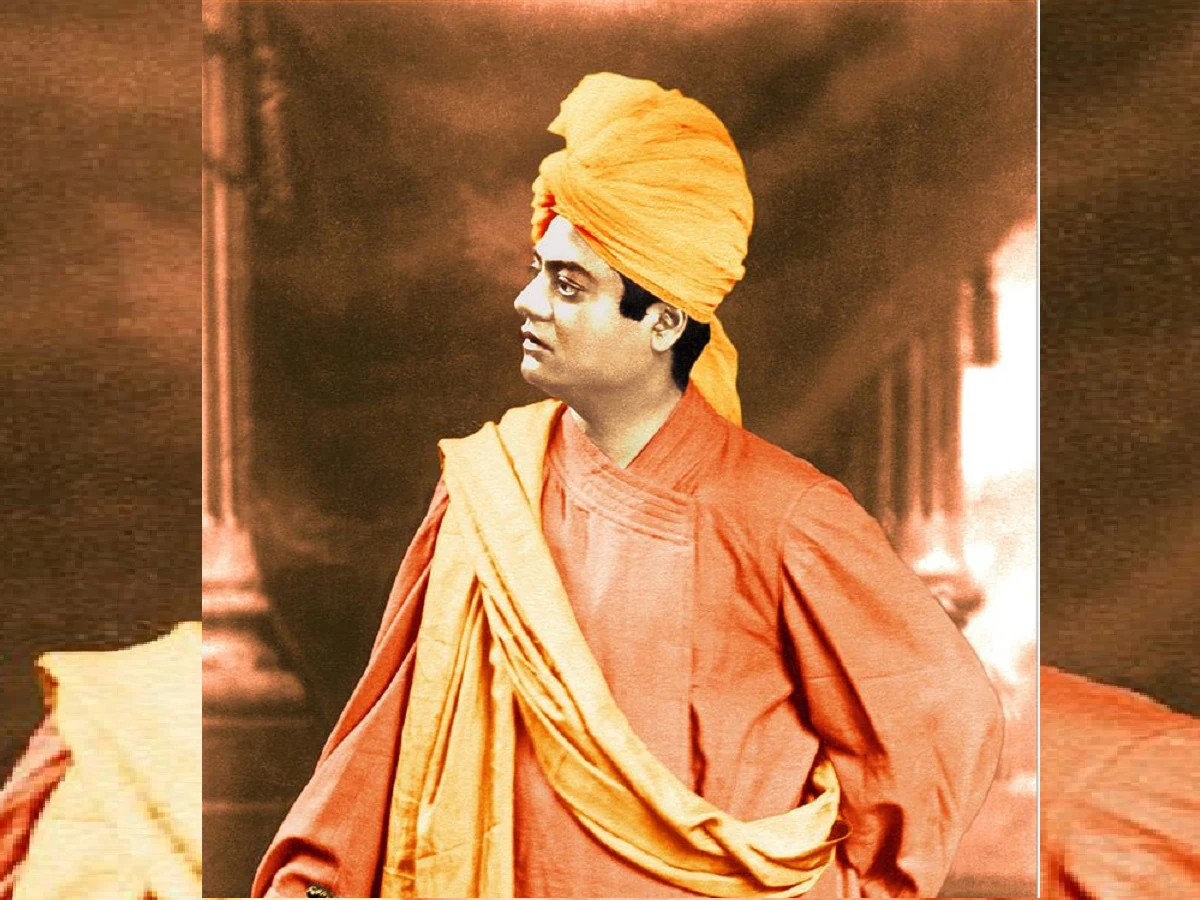
On 12 January each year, India celebrates National Youth Day, commemorating the birth anniversary of Swami Vivekananda—a visionary whose ideals continue to inspire generations. His emphasis on courage, self-discipline, and selflessness laid the foundation for building a nation of empowered youth. Yet, as we reflect on his teachings, a poignant question arises: if Swami Vivekananda were alive today, would he be proud of the state of India’s youth?
A Disturbing Landscape
Despite remarkable strides in education, technology, and global recognition, troubling statistics reveal a different narrative. Reports show a disheartening rise in suicides among young students, with academic pressure, bullying, and mental health struggles emerging as significant factors. According to the National Crime Records Bureau, India recorded over 13,000 student suicides in 2022—a grim reminder of the challenges our youth face.
Swami Vivekananda famously said, “Arise, awake, and stop not till the goal is reached.” But how do we encourage this awakening in an environment that often prioritises grades over mental well-being, competition over collaboration, and individual success over collective growth?
Polarisation and Division
In his landmark address at the Parliament of the World’s Religions in Chicago, Vivekananda envisioned a harmonious world, where mutual respect and inclusivity thrived. Yet, incidents of hate crimes in educational institutions paint a different picture. Instead of fostering understanding, many schools struggle to counter narratives of division and intolerance, which are seeping into the minds of impressionable young individuals.
Vaping is Cool!
Another alarming trend is the increasing prevalence of substance abuse and vaping among teenagers. Easy accessibility and peer influence have made vapes and drugs a growing concern in schools and colleges. Vivekananda’s ideal of youth as paragons of strength and discipline seems to clash with a reality where momentary fun triumphs responsibility.
Are We Listening to the Youth?
One of Vivekananda’s core messages was to listen and understand the needs of the youth, not dictate them. Today’s students crave purpose and authenticity in their pursuits. Yet, our education system largely remains exam-centric, with limited focus on developing emotional resilience, moral values, and critical thinking skills.
The rise of mental health issues highlights the urgent need for robust counselling frameworks in schools. Bullying, academic stress, and societal expectations weigh heavily on students. Swamiji believed in holistic education that nourished the body, mind, and soul—a vision that modern-day institutions must strive to achieve.
The Path Forward
- Mental Health Awareness: Schools must normalise conversations about mental health. Hiring trained counsellors and introducing life skills education can empower students to cope with stress and trauma.
- Fostering Inclusivity: Combatting polarisation starts with creating safe spaces for dialogue. Schools can champion diversity and empathy through collaborative activities and community-driven projects.
- Balanced Education: Beyond academic excellence, education must focus on creativity, moral values, and societal contributions—aligning with Vivekananda’s philosophy of balanced personal and communal growth.
- Youth Empowerment: Engage students in decision-making processes within educational institutions, giving them a sense of ownership and responsibility.
- Combatting Addictions: Early intervention and peer education programmes can deter substance abuse. Incorporating discussions on self-control and the consequences of addiction is crucial.
A Call to Action
If Swami Vivekananda were here today, he might be disheartened by some of these realities but would undoubtedly call upon educators, parents, and leaders to rise to the occasion. The Indian youth remain a powerful force capable of leading transformative change, provided they are equipped with the right guidance and support.
As educators and leaders, we must ask ourselves: Are we nurturing the kind of youth Swami Vivekananda dreamed of? Are we empowering them with the tools to think critically, act compassionately, and embrace diversity? Or are we just celebrating the day just for the sake of it? We need to ask real questions. The answers lie in our collective efforts to reshape the educational and societal systems influencing young minds.
Swami Vivekananda’s timeless words echo loudly: “The youth are the pillars of the nation.” It is upon us to ensure that these pillars stand strong, united, and unwavering, ready to lead India toward a brighter and more inclusive future.
Newsletter

Indian Astronaut Shubhanshu Shukla to Connect with School Students Live from Space

Are 4-Year Degrees Dead? Nikhil Kamath and the WEF Say Lifelong Learning Is Here to Stay

UGC Cracks Down on 89 Institutes Over Anti-Ragging Failures

Government Doubles Down on Coaching Centres: New Panel Signals Stronger Regulation Ahead

CBSE To Conduct Board Exams Twice for Class 10 from 2026

How to Win Back Wandering Minds: Post-Summer Edition
Tripura Becomes Third Indian State to Achieve Full Literacy

Assam Brings Sign Language to Senior Secondary Classrooms in Landmark Move

Delhi Schools to Implement Age 6 Rule for Class 1 Admissions from 2026

Tripura Adds Sex Education & HIV Awareness to Their Curriculum

Four Indian Schools Shine on the Global Stage at World’s Best School Prizes 2024

Centre Urges 7 States to Consider Common Board Amid Alarming Student Failure Rates

IIT Delhi Leads India in the QS Rankings 2026; MIT Tops Globally

Chandigarh, Punjab Lead in School Education Rankings; Meghalaya Trails Behind

Maharashtra Revises Policy on Third Language in Schools, Hindi No Longer Mandatory

From Academics to Empathy: Redefining Academic Success

India Sends 20 Students to Japan Under Sakura Science Programme 2025

Delhi Schools to Observe June as Anti-Malaria Month, Says DoE

Telangana Govt Ties Up With 6 NGOs to Revolutionise Teaching in Govt Schools

History, Identity, and Pride: Books That Make Sense of Being You

Delhi Government Clears Ordinance to Regulate Private School Fees After Protests

Of Formulas and Frames: Why India Must Stop Dividing Science and Art

43-Day Hunger Strike Ends as Govt Backs Teachers’ Demands

OpenAI Academy Launches in India to Democratise AI Education for Students, Teachers, and Startups

World Environment Day: Why Your School’s Environmental Education Needs a Cleanup

Is Your School Following These Mandatory CBSE Committees?

CBSE’s ‘Sugar Boards’ Initiative: Tackling the Sweet Crisis in Indian Schools

“Be the Change in a Changing World”: Anita Karwal and Anju Chazot Reflect on NEP 2020
CBSE Warns Dummy School Students May Be Barred from Board Exams

Maharashtra to Regulate Pre-Primary Education with New Law Aligned to NEP 2020

China Embarks on Ambitious AI-Driven Education Reform to Build a ‘Strong Education Nation’ by 2035

MAHAJYOTI’s Book Distribution Scheme to Empower 7,000 OBC Students Preparing for JEE/NEET & MHT-CET

John King’s Book ‘Teacher By Teacher’: A Global Tribute to the Transformative Power of Education

‘Baalpan ki Kavita’ Initiative Launched to Restore Indian Rhymes for Young Learners

Rewriting Ambedkar: Why Students Must Know the Man Beyond the Constitution

CBSE Introduces Mandatory Bridge Course for Classes 6 to 12 in Chhattisgarh Under NEP 2020

CBSE Mandates 50-Hour Annual Training for Teachers, Declares STEM as 2025 Theme

India Bids Farewell to NEP Architect Dr K. Kasturirangan

Pradhan Mantri Rashtriya Bal Puraskar 2025: Nominations Now Open for India’s Young Achievers

Banu Mushtaq’s International Booker Win Is a Wake-Up Call for Indian Schools to Reclaim Literature

NCERT Class 7 Textbooks Updated: Mughals Removed, Focus on Indian Ethos and Pilgrimage

Delhi Government Cracks Down on Dummy Schooling; Over 600 Schools Inspected, 10 Issued Notices

Delhi Approves Landmark Bill to Regulate School Fees Across 1,677 Institutions

The Ethics of AI Art in Education & Nostalgia: The Ghibli Effect

Operation Sindoor and Operation Abhyaas: Navigating School Safety and Student Well-being Amid Rising Tensions
CBSE Revises Class 10, 12 Curriculum: Biannual Exams, New Subjects and Flexible Passing Criteria Introduced

Harvard Stands Its Ground: Harvard Faces ₹18,400 Crore Funding Freeze After Rejecting Trump Administration’s Demands

CUET-UG 2025 Likely to be Postponed, Fresh Dates Expected Soon

Aalamaram 2025: Where Indian Educators Came Together to Grow, Reflect, and Lead

Trump Signs Executive Order to Promote AI Integration in U.S. K-12 Education
SGEF2023 | Special Address by Rama Datt, Trustee, Maharaja Sawai Man Singh II Trust, Jaipur

ScooNews | After Movie | ScooNews Global Educators Fest 2023

Aftermovie | NIES2 UP Chapter | 21 Jan 2023

WEBINAR | Gamification in Education: How Digital Badges Can Boost Student Motivation and Engagement

ScooNews | WEBINAR| Importance of Physical Activity for Children at School | Plaeto

SCOONEWS | WEBINAR | WHY DIGITIZING YOUR SCHOOL IS A MUST | TEACHMINT

Keynote Address | Lakshyaraj Singh Mewar

Anurag Tripathi, Secretary, CBSE at SGEF2022

How schools can nurture every student’s genius

Aftermovie | SGEF2022 | Jaipur

Li Andersson | Minister of Education | Finland

Anurag Tripathi, Secretary, Central Board of Secondary Education (CBSE) discusses NEP2020

ScooNews | Early Ed Asia 2019 | Aftermovie
#PodarECEconf : Pursuing quality ECE

#CBSE Class XII #Results #Highlights

The interesting story of India’s educational system | Adhitya Iyer

A young scientist’s quest for clean water

The Danger of Silence: Clint Smith

National Digital Library of India is an initiative by HRD Ministry

Remembering Kalpana Chawla on her birthday!

Message from Sadhguru for Students!
Message from Sadhguru for Students!

The Untapped Genius That Could Change Science for the Better

Eddy Zhong: How school makes kids less intelligent TEDxYouth@Beacon

#TEDxCanberra : What if every child had access to music education…
Trending
-
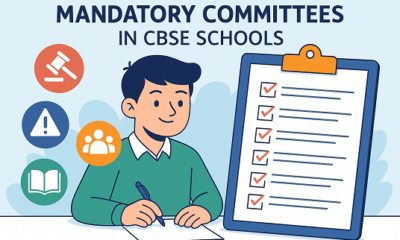
 Education3 months ago
Education3 months agoIs Your School Following These Mandatory CBSE Committees?
-

 Education1 month ago
Education1 month agoCBSE’s ‘Sugar Boards’ Initiative: Tackling the Sweet Crisis in Indian Schools
-
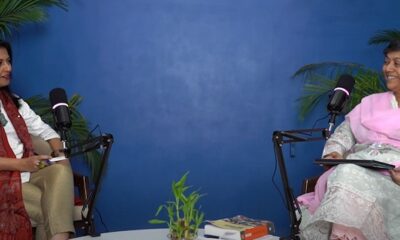
 Education3 months ago
Education3 months ago“Be the Change in a Changing World”: Anita Karwal and Anju Chazot Reflect on NEP 2020
-
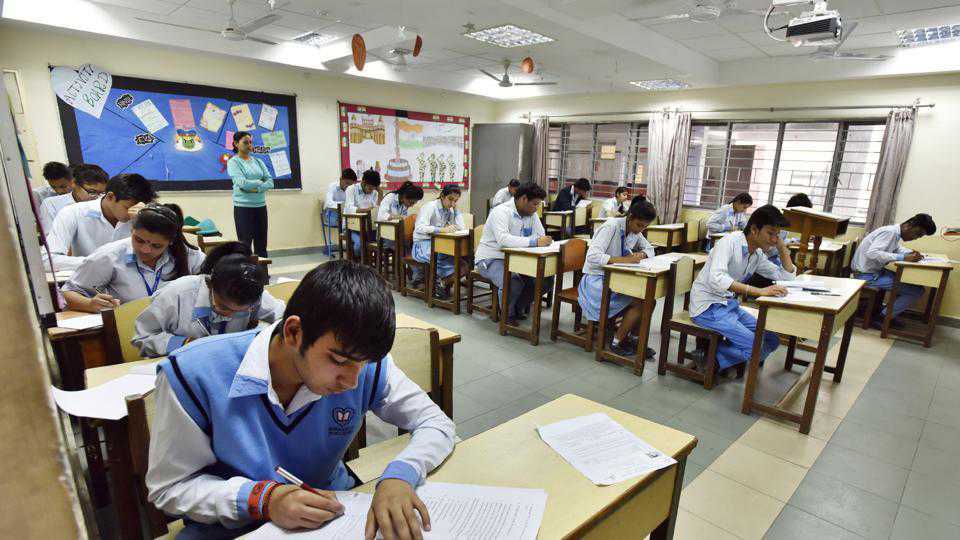
 News3 months ago
News3 months agoCBSE Warns Dummy School Students May Be Barred from Board Exams
-
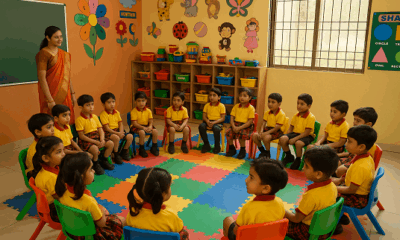
 Education2 months ago
Education2 months agoMaharashtra to Regulate Pre-Primary Education with New Law Aligned to NEP 2020
-
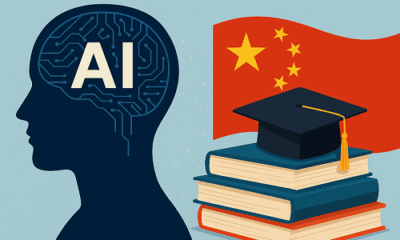
 Education3 months ago
Education3 months agoChina Embarks on Ambitious AI-Driven Education Reform to Build a ‘Strong Education Nation’ by 2035
-
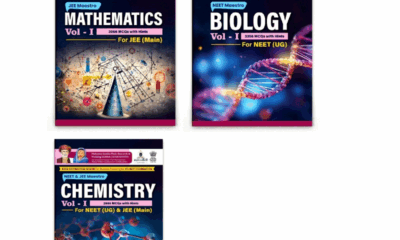
 Education3 months ago
Education3 months agoMAHAJYOTI’s Book Distribution Scheme to Empower 7,000 OBC Students Preparing for JEE/NEET & MHT-CET
-
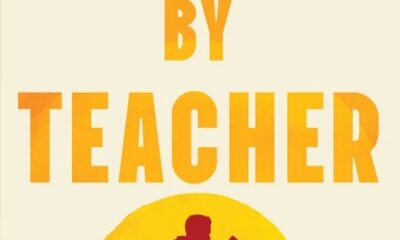
 Education2 months ago
Education2 months agoJohn King’s Book ‘Teacher By Teacher’: A Global Tribute to the Transformative Power of Education
-
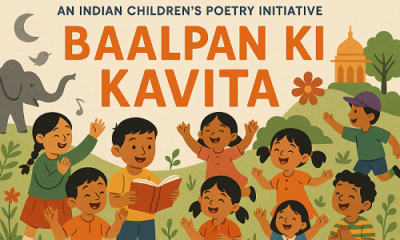
 Education3 months ago
Education3 months ago‘Baalpan ki Kavita’ Initiative Launched to Restore Indian Rhymes for Young Learners
-
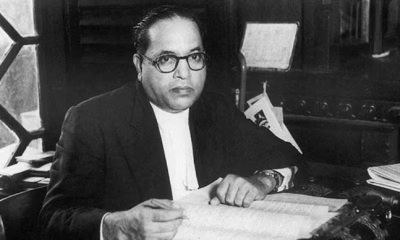
 Education3 months ago
Education3 months agoRewriting Ambedkar: Why Students Must Know the Man Beyond the Constitution




